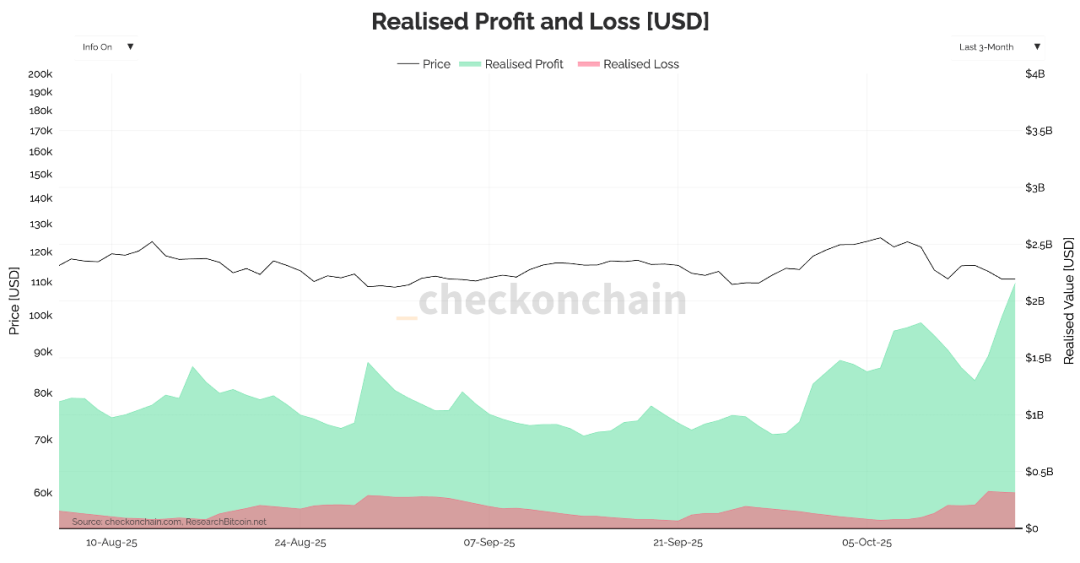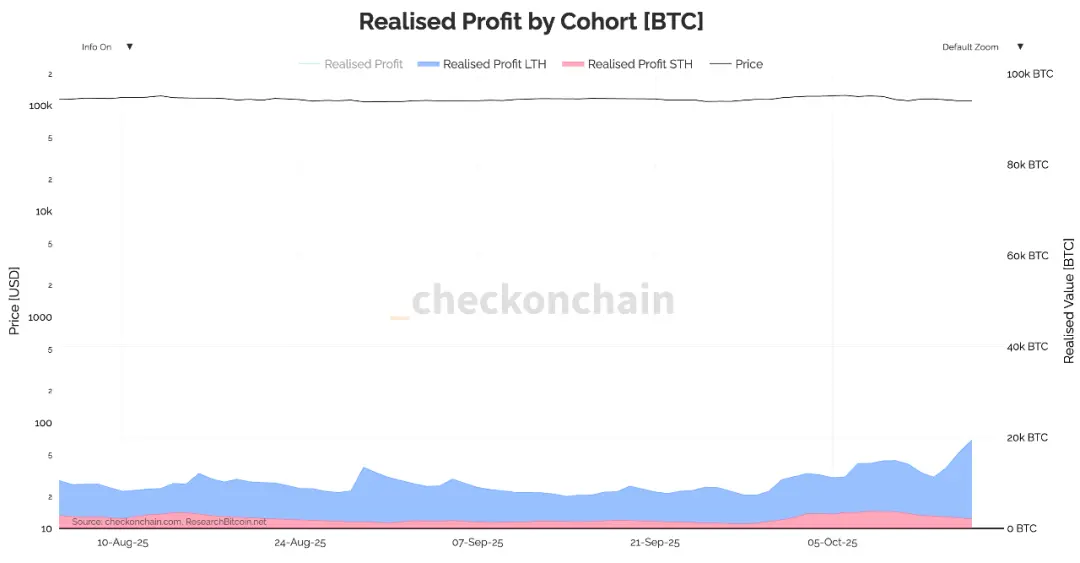Bitcoin is showing signs of fatigue, which typically precedes large directional moves.
On October 15th, traders realized $1.8 billion in profits, one of the largest profit-taking days since the beginning of the summer.
On the same day, the market also saw $430 million in realized losses.
The data confirms the general feeling in the market since the weekend plunge: momentum is gradually fading and a large amount of funds are flowing into the exit channel.

As of press time, the price of Bitcoin is below $110,000, down more than 10% since early October.
This decline was not a slow decline, but was caused by the rapid closing of positions by investors who entered the market in early 2025 and held on to it until now.
Long-term holders (i.e. investors who hold positions for more than 3 months) are the main force of this sell-off, and the scale of their realized profits is more than 6 times that of short-term holders.
Even during last week's plunge, long-term holders remained deeply profitable, so it can be judged that they were not panic selling.
They are de-risking: choosing to take profits on market weakness rather than waiting for a rebound.

After the market consolidation, a certain degree of profit-taking is a normal operation, and hundreds of millions of dollars of profit-taking in a single day can be interpreted as a healthy capital rotation.
But as has been observed since early October, when this outflow of funds forms a sustained trend, its nature is no longer "distributed selling" but begins to show characteristics of "market exhaustion."
Realized losses are also rising. Although losses are still within a “controllable” range, they have risen in tandem with realized profits.
If realized losses continue to grow in tandem with profit realizations, it could mean that de-risking is spreading from short-term holders to the entire market.
This spread could be highly contagious, as half of short-term Bitcoin holders are currently losing money.
Data from Checkonchain, an on-chain data analysis platform, shows that unrealized losses currently account for about 2% of the market value. Although the scale is not large, the rate of increase is relatively fast.
If the price of Bitcoin falls below $100,000, this ratio is likely to rise to 5%, which is enough to turn the current market "unease" into full-scale panic.
According to historical data, only in a complete bear market phase will more than 30% of the circulating supply be in a loss state, and the current market is dangerously close to this threshold.
If buyers can successfully hold the $100,000 mark, Bitcoin may reset its short-term cost basis and resume bullish momentum.
If it falls below $100,000, the cost basis for the new round of buyers will collapse and all short-term liquidity will turn into a loss-making state.
This does not necessarily mean the end of this cycle, but it could extend the correction further to $80,000, which is about 35% of the all-time high (ATH).
While Bitcoin’s current stability remains remarkable given the scale of the current selling pressure, the on-chain signal is clear: market confidence is waning.
The bulls are still holding their ground, but each falling candlestick pattern makes it harder for the outside world to judge whether they are “buying on dips” or “catching the falling knife.”







